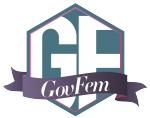What’s it like to be a leader in a male-dominated field? The National Geospatial-Intelligence Agency’s Christina Monaco, Director of Corporate Assessment and Program Evaluation Office, has championed leadership and development in the public sector for years. In her keynote at GovLoop’s Next Generation of Government Training Summit, Monaco provided inside tips on what’s it’s like to rise through the ranks as a female leader. She also gave advice on how to encourage more diversity and inclusion in leadership roles. 
“When I started my career in naval intelligence, it was still a novelty to find a woman in the operations field,” Monaco said. “Typically, after meetings, there were a lot of phone calls to make. I would tell the people on the other line, ‘You might remember me from the meeting earlier, I was the one in the skirt.’”
Her boss, Sue Gorden, said, “By elevating women, we elevate everyone.” Monaco emphasized that as being the reason why diversity and perspective must be baked into all intelligence assessments.
But focusing on diversity and inclusion is not just a priority for intelligence. It’s a national priority. “How many times do we engage in constructive dialogue where everyone actually listens to each other?” Monaco asked. With the current political landscape, it is clear that we don’t do this often enough as a society. Monaco pointed to the harm this has on government and citizens by citing a Pew study showing trust in government at a historic, all-time low.
Part of the reason can be attributed to living in an age of knowledge polarization. So much of the information we receive is curated to fit a business intelligence profile. While it’s efficient and a good market-led model, this only confirms people’s own world views. And now we actively exclude voices from other information feeds.
“How many of you have scrolled through social media and seen people complaining about the views of others?” Monaco asked. “We in government must rise above that fray. We must include all perspectives. If we’re going to do our jobs effectively – managers, executives, line employees – it’s everyone’s responsibility to create a culture of inclusion and take an active role.”
“Inclusion is more than just an equal playing field” she added. “It’s making sure we all have access to the same information and opportunities. It’s making sure we have the dialogue that the public expects us to have.”
Unfortunately, many of us are taught from an early age to ignore our gender or racial biases or simply not talk about it. “It’s the polite thing to do,” Monaco said. “We don’t need to talk about our differences because we want to move past them.”
But this approach is actually counterproductive to improving diversity and inclusion. By glossing over moments differences, we let biases fester.
“It’s time to unlearn that approach,” Monaco said. “When you devote just a little bit of attention to it, it makes a difference. I chose to acknowledge my difference as a woman. I wanted people to be more identity-conscious than identity-blind.”
Monaco pointed to a common experience minorities have at work. You’re in a meeting and the only one representing your race, gender or age. You’re in this meeting and you feel you have a valid point to contribute. It takes a good amount of courage to speak up and you do it. While you’re making your point, someone speaks over you. You let it go at the time.
“But here’s the thing, that was your moment,” Monaco said. “That was a culture moment for you and everyone else in that meeting. But you accepted that behavior as a norm. If the same thing happens again, it becomes a pattern.”
The danger or allowing these subtle acts of micro aggression or discrimination to occur is that they become patterns that are harder to break. “These behaviors accumulate going from one incident to a pattern of behaviors for people,” Monaco said.
She highlighted an example from her own personal experience in her early career. “When I first started out, an officer in my unit used to refer to everyone under 30 as ‘kiddo.’ There was a definite generational gap in the workplace. I knew my officer and it was a place of noble intent. He saw us as family. For him, calling us ‘kiddo’ was a term of inclusion. But it actually came across as ageist and condescending. When everyone else followed his example and started calling us ‘kiddo,’ it then became a term of exclusion. We eventually had to say something about it.”
While patterns of exclusion are prevalent across all workforces, Monaco shared some tips you can apply to help combat discrimination and improve inclusion:
- Pay attention to the patterns. Look at the data and facts around you. What does the data say? For example, statistics show that women still struggle to gain significant leadership opportunities in their places of work. What can you do to improve that?
- Use Frown Power. Stetson Kennedy, an American author and human rights activist, is remembered for having infiltrated the KKK in the 1940s and exposing its secrets. He also championed “frown power.” When confronted with racist sexist, or any sort of discriminatory speech or behavior, get allies to frown in disapproval. Having such a negative response like frowning or “saying that’s not right” can help inhibit discrimination in the workforce.
- Amplify. Amplification is a means of positive reinforcement, inviting participation and making sure all voices are heard. This means echoing someone’s point in a meeting and not claiming it as your own. It also means recognizing they made a contribution. A practical example is redirecting the conversation back to someone (i.e. a woman) who was interrupted. “You were starting to make a point earlier; I’d like to hear it.” By amplifying the voices of others, especially those who are underrepresented in the workforce, you create a more inclusive environment.
When combatting discrimination in the workplace, Monaco asked the audience to think of Malcolm Gladwell’s quote, “Activism that challenges the status quo is not for the faint of heart.”
For government, it’s crucial to pay attention, keep the frown power going and amplify voices that are too often ignored and unheard. “All of these voices and perspectives are crucial to getting out of the public trust deficit for government,” Monaco concluded. “Don’t ignore the voices. Acknowledge them, embrace them. They are what make us great.”
This blog post is a recap of a session that took place at the recent Next Generation of Government Summit. Want to see more great insights that came out of NextGen? Head here.





Leave a Reply
You must be logged in to post a comment.